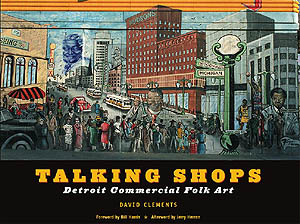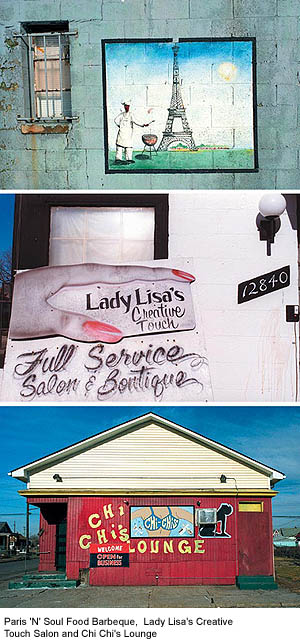|
Windows to the
Hand-painted shop signs are among the truest forms of vernacular art. Speaking an idiomatic language widely understood in their intended community, they are vernacular in the strict sense of the term. Just as pertinent, they communicate in near total independence from fine art society, rarely reflecting its cultural aspirations and pretensions. Yet they can embody the creative qualities fundamental to art -- visual expressiveness, aesthetic dimension and craftsmanship. And they are typically made by artists who are self-taught or, if trained, working within a kind of folk tradition. However artful a sign might be, though, its aesthetic qualities almost always come second to its inherent function. This incidental quality to any artistic intention actually opens up opportunities for individual expression, since the commissioner of the sign is likely to be more concerned with the fist-order communication of the commercial message than the details of artistic execution. The artist may put his or her heart and soul into the lettering of the details of the image, but the shop owner's first priority will be what the sign says. That's also true of the viewer. Interaction with a sign is, in the first instance, on the sign's own terms. The imagery may be exotic or obscure, but you will still routinely seek out the commercial message the sign conveys even if you have no plausible interest in the business advertised. That irresistible response actually supplies a comforting accessibility along with functional authenticity. Whatever other qualities these signs possess, their core goal is straightforward and apparent.
These works of art are all free for the finding, though like most hand-made artifacts relatively rare. Still, they put art all over the landscape, which is something to be treasured if you know to look for it. The most fruitful locations for finding this work include rundown commercial strips and inner cities. The less money that businesses have to invest in their signs, the more likely they are to go do it yourself. The less they have invested in modernization, the fewer cases of prefab plastic replacing hand-made. Inner cities have the additional advantage of lively ethnic communities that bring their own vernacular commercial traditions to bear on signage. Wherever one finds these signs, their lifespans are sure to be short. If they are not obliterated because of a change in tenant, preparation of a building for sale or adjustments in the owners taste or resources, they will wear out from exposure to the elements. That's what makes a book like David Clements' Talking Shops so great, and absolutely essential for anyone who fancies roadside art. It documents work that is certain to disappear long before its equally certain elevation to the status of lost cultural treasure. (It's not just age that gives 18th and 19th Century trade signs their appeal, after all, but the qualities of vernacular expression they share with contemporary material.) Talking Shops' venue is Detroit, which not surprisingly, is an especially rich location for these signs. Its generous sampling of down-market beauties, especially wall paintings, provide a good window into signs that range from the minimal (in name and imagination), represented well by the House of Items' tiny pink couch and blue television, to the disproportionately elaborate, like the history mural decorating East Side Check Cashing. Clements' photos are straightforward representations of their subjects. As a photographer he lets the artfulness and expressivity of the signs take precedence over his own. Most often he shoots straight on, usually tight on the content. The captions simply name the business and location. It's left to the reader to appreciate the virtues of the book's art, but that's good training for spotting similar examples in situ, which is the only practical way to actually view this ultimately non-collectible folk art. Find more about Talking Shops and related work at David Clements' Web site. A version of this review originally appeared in the Intuit magazine, published by the Intuit: The Center for Intuitive and Outsider Art. |
Detroit sign portraits
The Latest Stuff | Roadside art | Outsider pages | The idea barn | About | Home
Copyright William Swislow 2005

